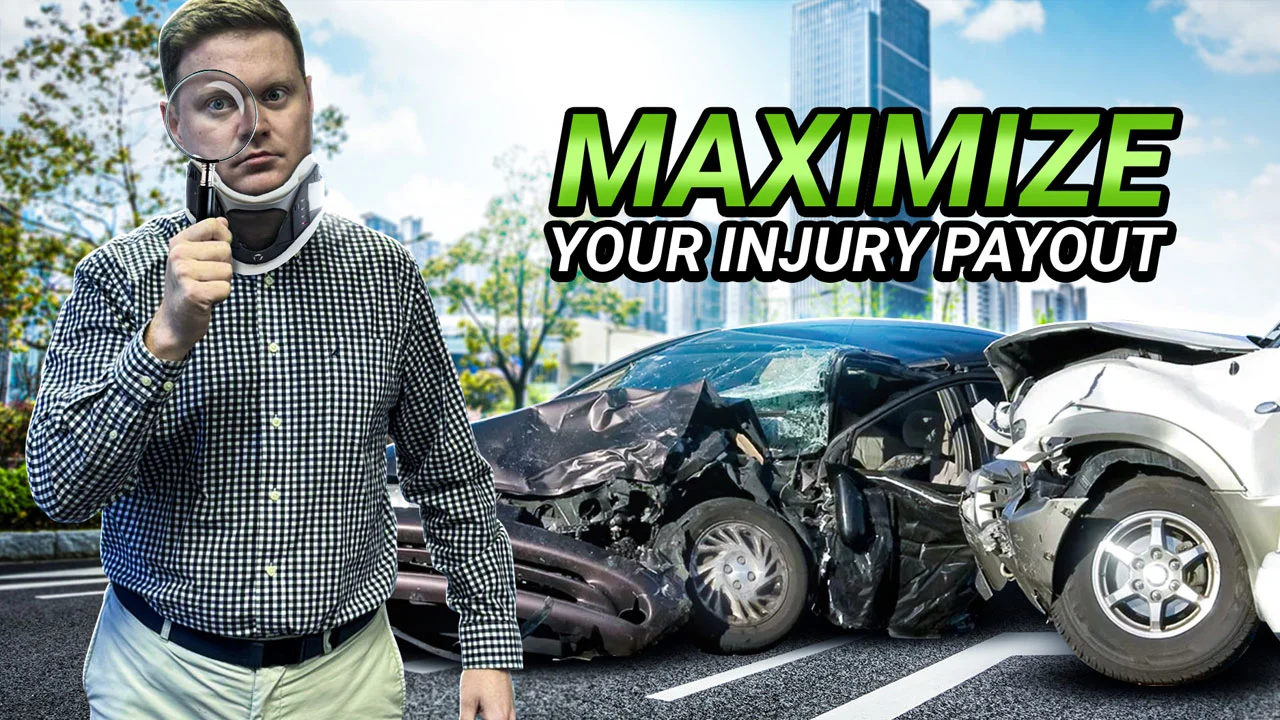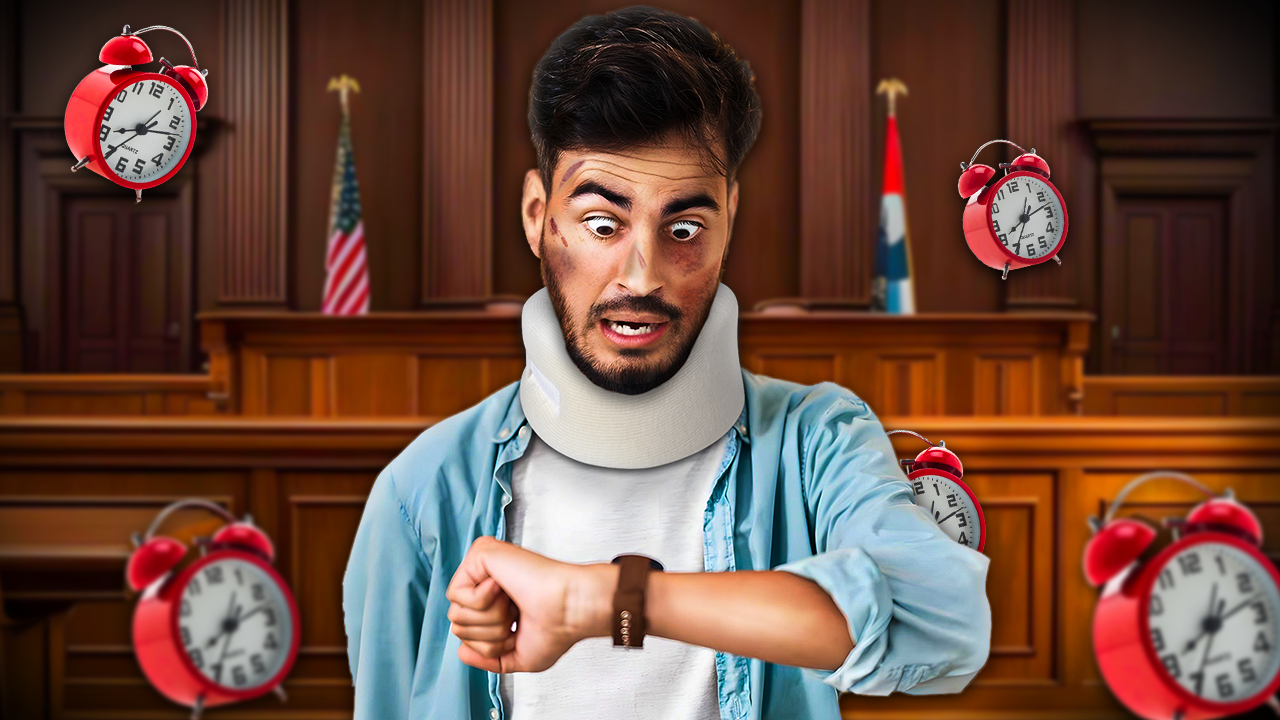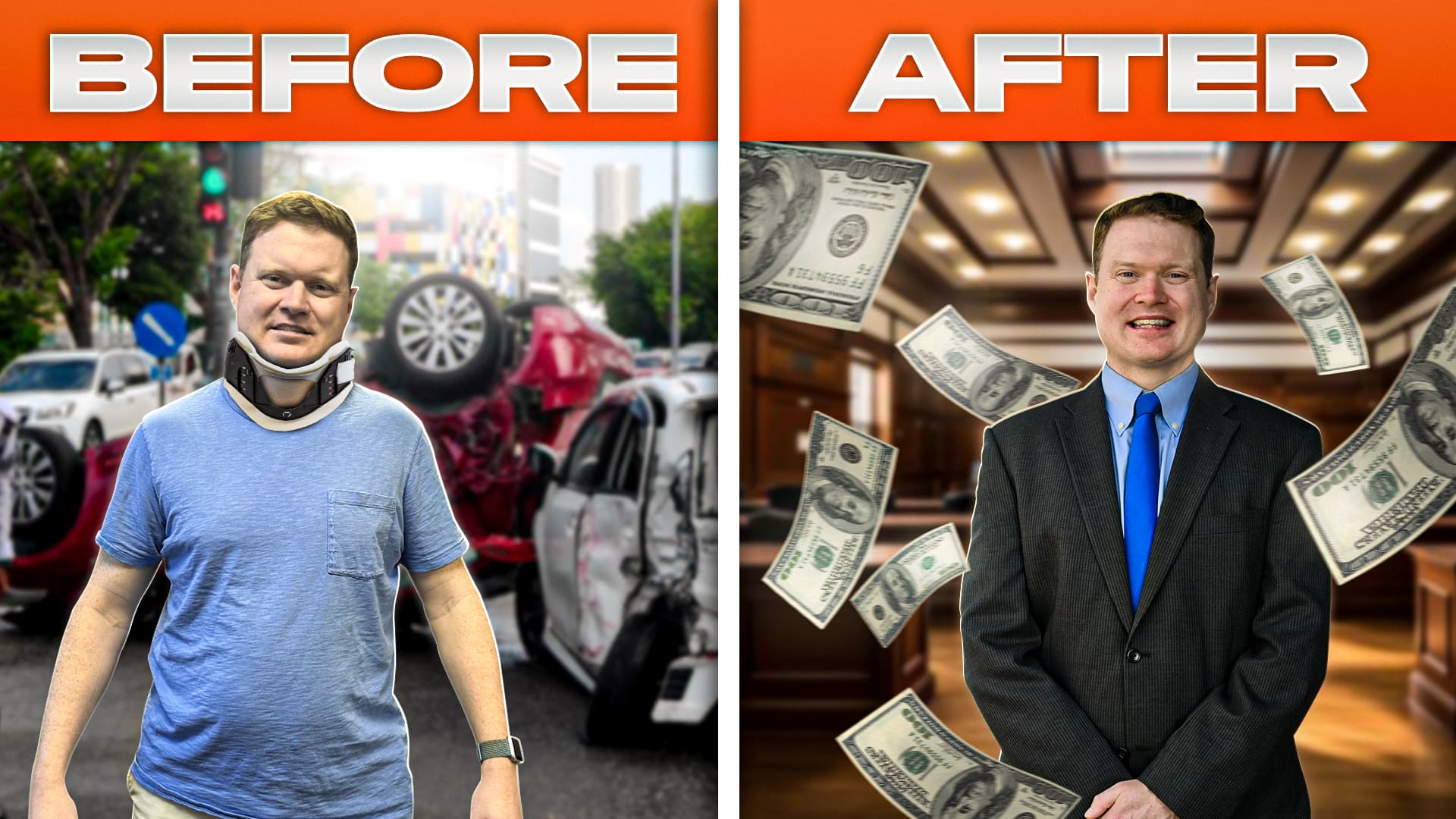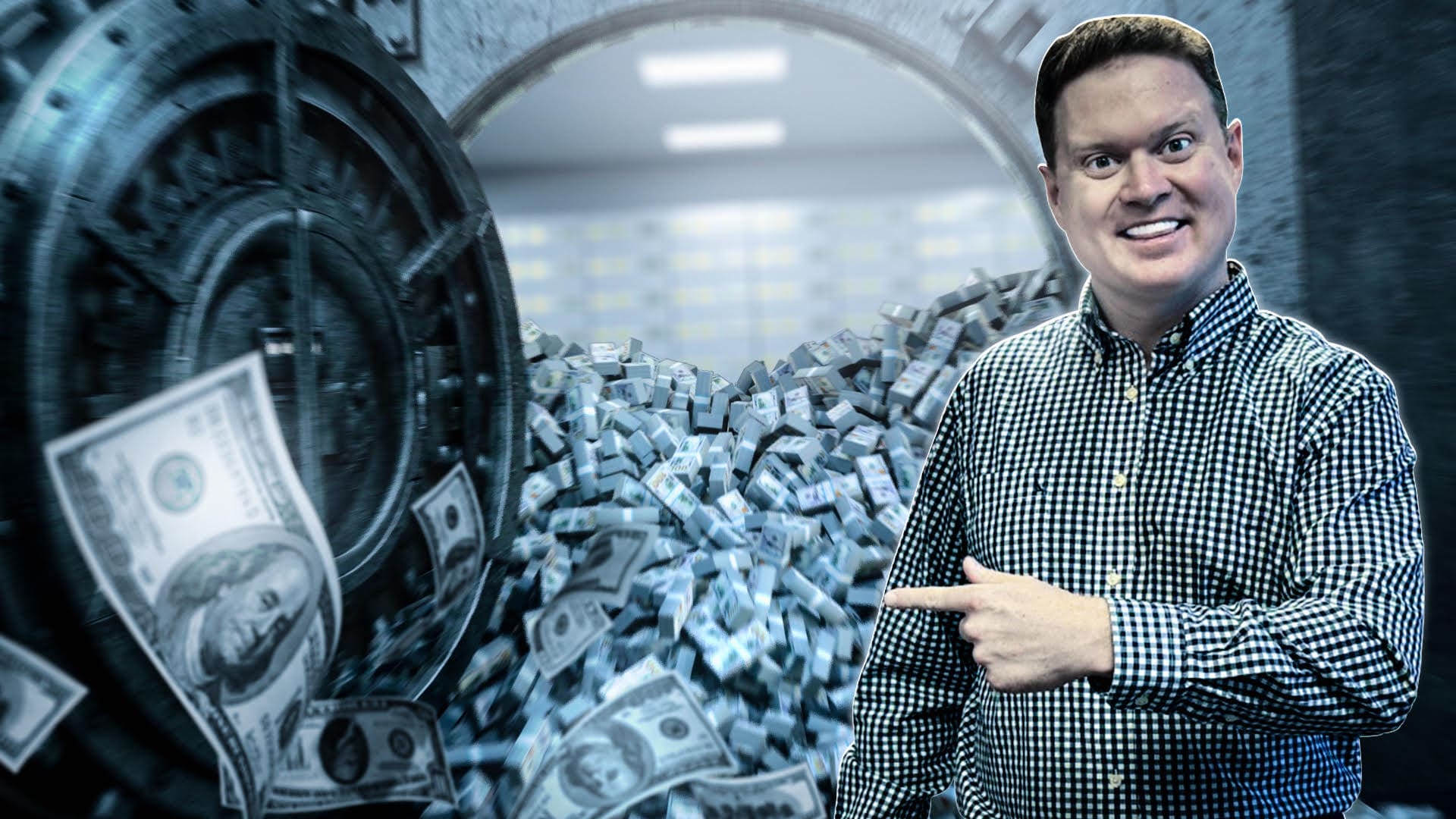Every big injury case has these three factors present that I’m going to go over in this video. If just one of these factors is not present in your case, you will not have a huge payout for your injury claim. These factors apply to all injury cases, including car accidents, slip and fall, and dog bite injury cases.
Key 1: Proving Liability
The first factor that must be present in order to have a huge payout on an injury case is that there must be liability against another party. This means you must be able to show that another party acted at least negligently to cause your injuries, meaning another party was careless or inattentive.
Examples of Proving Liability
- Car Accidents: For instance, if another driver rear-ended you while stopped at a traffic light because they were texting and driving, clearly the other driver was acting negligently and would be liable for any of your injuries that they caused.
- Dog Bites: Liability also is often very easy to prove in dog bite or dog attack cases. In Kentucky, the state I practice law in, for instance, a dog owner is strictly liable for any damage or injuries caused by their dog. This means the dog owner is presumed liable, so even if the dog owner showed they acted reasonably by having the dog leashed and the owner had no intentions of doing so, they are liable for any damage or injuries caused by their dog.
- Premises Liability: Liability can sometimes be more difficult to prove in premises liability cases, such as slip or trip and fall injury cases on a business premises. Under the law of Kentucky and other states, a business open to the public like a grocery store, restaurant, hotel, gas station, or retail store has a duty to inspect for hazardous conditions on their premises that could lead to someone tripping or slipping. I highly recommend anyone hurt on a business premises to take or have a loved one take photographs of the area where they fell and to report the incident to management of the business after the fall.
Key 2: Significant Damages
The second factor that must be present in order to have a huge payout on an injury case is that there must be big damages. The most common types of damages one can recover in an injury case are past and future medical bills, past and future pain and suffering, lost wages, and impairment to your ability to earn an income in the future.
Examples of Significant Damages
- Medical Bills: Unfortunately, if you have big damages, it likely means you have been severely injured and maybe sustained broken bones, sustained a brain injury, or required surgery due to your injuries. If you sustained bad injuries or required a surgery, your medical bills are usually going to be enormous.
- Future Damages: Don’t forget though, you can also claim future damages like future medical bills or impairment to your ability to earn an income in the future. To prove the amount of your future damages, you will likely need an expert to testify or provide a report in your case.
- Pain and Suffering: Past and future pain and suffering can also be a huge portion of the payout on an injury case. It’s important to inform any insurance company of all the suffering you are going through due to your injuries. For instance, if you now have to use a walker to get around, or maybe you can no longer enjoy any of your hobbies like bowling or golf, like you could prior to your injury, you want to inform the insurance company or defendant in your case of this, as that can increase the value of your case.
Key 3: Significant Insurance or Assets
The third and last factor that must be present in order to have a huge payout on an injury case is that the at-fault party must have a significant amount of insurance or deep pockets available to pursue.
Importance of Insurance or Assets
- Insurance Coverage: You could sustain injuries that may leave you in a wheelchair for the rest of your life, but if there is not a big amount of insurance or at-fault party with deep pockets to pursue, you likely won’t have a big payout on your case. Sure, you always have the option to pursue the party for personal assets if they have no insurance or not enough insurance. However, it’s been my experience most of the time if the at-fault party does not have enough insurance to cover all your damages, it’s not worth the effort to pursue the at-fault party personally.
- Judgment-Proof Parties: If the at-fault party is judgment-proof, they have so few assets or personal money to their name that even if you get a judgment in court against them for a sum of money, that judgment is worthless due to the limited assets held by that person. You won’t get compensation from a judgment-proof party.
- Pursuing Large Corporations: If you have a claim against a large corporation or wealthy individual, it may very well be worth pursuing those at-fault parties for compensation beyond any insurance they have. But in my experience, those types of injury cases can be very time-consuming. It’s simply the case that to have a big payday on an injury case, you must have an at-fault party with a large amount of insurance or deep pockets to pursue.
Conclusion
Simply knowing the three biggest keys to any injury case will give you a good understanding of what must be present for you to possibly have a big payday. But in order to actually get a big payout on your case, you must avoid making mistakes. And in this video, about to pop up right here, I’ll show you several of the most common mistakes one could make in order to handle a personal injury claim. So, you know what those mistakes are, in order to avoid making them, to give you the best possible chance at a big payout on your injury case. Lastly, if you’ve been injured in an accident in Kentucky, remember: don’t wait, call Tate.








Recent Comments